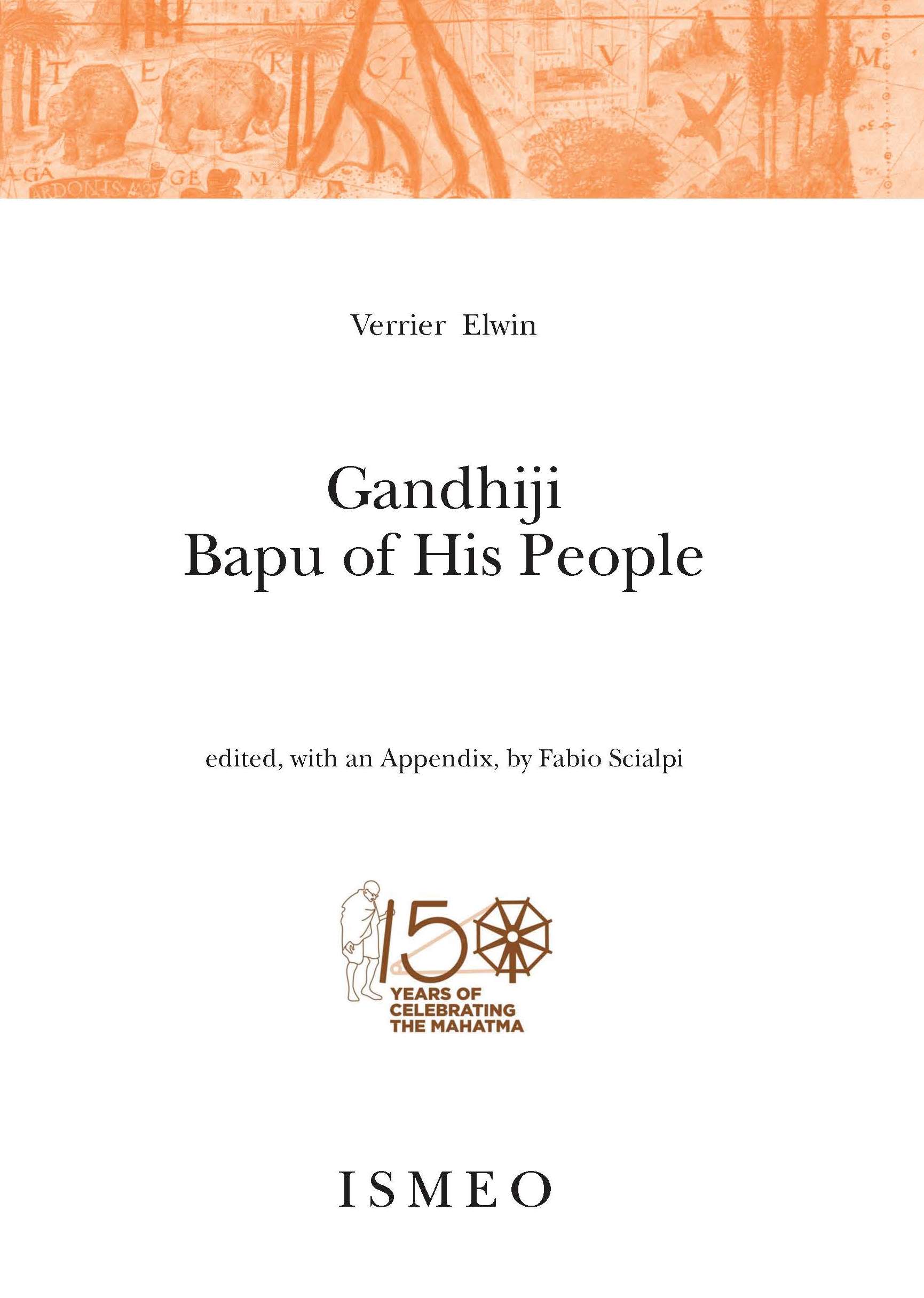Gandhiji. Bapu of His People - Il Novissimo Ramusio 28
edited, with an Appendix, by Fabio Scialpi
- Anno: 2021
- Autore/i: Verrier Elwin
- Catalogo: Scienze e Lettere
- Argomento: Orientalistica
- Collana: Novissimo Ramusio
- ISBN: 9788866871972
- ISSN:
Dr Verrier Elwin (29.8.1902-22.2.1964) was the son of an Anglican bishop holding the see of Sierra Leone, who had been appointed Bishop of Bristol; his mother “was born in India, at Murree,1 which her family had done much to found.” He was one of the most well-known, authoritative, and dedicated students of Indian Tribal Cultures. His life—described in his books, The Tribal World of Verrier Elwin. An Autobiography (Bombay, Oxford University Press, 1964); Philanthropologist.
Selected Writings (ed. by Nari Rustomji, North-Eastern Hill University Publications, New Delhi, Oxford University Press, 1989, pp. 1-17); and in Scholar Gypsy: A Study of Verrier Elwin by Shamrao
Hivale (Bombay, N.M. Tripathi Ltd, Booksellers, Publishers, 1946)—, bears witness to an adventurous, fascinating story of an extraordinary man of past times.
After a brilliant career of studies in English Literature and Theology in Oxford—an experience that would continually recur with nostalgia during all his life, he left as a Christian missionary
for India in November 1927 to join an ashram-settlement called the Christa Seva Sangh in Pune (then commonly written Poona). This was a small Order, founded by Father Jack Winslow, who, after having been a missionary in Western India for many years, had identified himself more closely with the poor, with Indian nationalism, and with Indian culture. He had, therefore, decided to explore the possibility of a re-orientalisation of the Christian religion according to a new model of evangelical work offered by the Indian experience with special attention to service to the poor.
It is interesting to note that the young Elwin’s choice of his new activity in India was influenced by a most noble intent which, however, was characterized more by the ideal of social service than by religious commitment, i.e., the desire to make reparation to the poor for the way more privileged people had behaved to them. Now in relation to India I remembered how my family had made its money, such as it was, out of India, and my countrymen had gone to India to exploit it and to rule./I thought, therefore, that I might go to India as an act of reparation, that from my family somebody should go to give instead of to get, [...].
This perhaps explains the reason why he was to become a Gandhian follower. The personality of Gandhi, who, in previous years, had impressed also his Christian most devout mother, had a strong impact on this young man who, all along his life, was to be on the side of the exploited poor, fighting for them against injustice and oppression. Elwin saw Gandhi, for the first time, in the course of a visit to his ashram, at Sabarmati, near Ahmedabad, Gujarat in 1928, on the occasion of a conference of a body, the Inter-Religious Fellowship, which was attended by adherents of all religions. The impression he received from this encounter is best rendered through his very words, which reflect, in Hindu terms, a sort of darshana (vision) that he then enjoyed:
Among them Gandhi walked in almost unearthly dignity and beauty. That was the first thing that struck me about him—his beauty, and the inner spiritual power that transformed his frail body and filled the entire place with kindliness and love.[---]
(dall’Introduzione di Fabio Scialpi)
CONTENTS
Introduction by F. Scialpi
TWO TEXTS BY VERRIER ELWIN
Mahatma Gandhi. An Essay by Verrier Elwin
Gandhiji. Bapu of His People
APPENDIX
F. Scialpi, Mahatma Gandhi, a Guide for Contemporary World’s Society, a Light for the Future of Humankind ......
F.to 15x21, pp. 124, Brossura filo refe, Ill. B/N e colori



